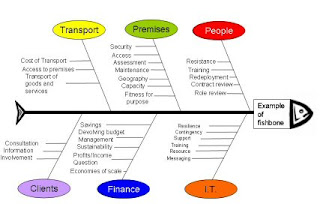10. Project Communications Management
We talked about human resource management on the last part.  Of course that if we want to have a good relationship among employees and managers, the most important thing is to have good communication. And so, we come to the other knowledge area that is; Project Communications Management. Strong verbal skills are a key factor in career advancement for IT professionals. Project communication management includes the following processes;
Of course that if we want to have a good relationship among employees and managers, the most important thing is to have good communication. And so, we come to the other knowledge area that is; Project Communications Management. Strong verbal skills are a key factor in career advancement for IT professionals. Project communication management includes the following processes;
Communications Planning:
Communications planning means determining the information and communications needs of the stakeholders. Every project should include some type of communications management plan. Communication management plan is a document that guides project communications. A very important document in this process is a stakeholder analysis. it describes the characteristics of the stakeholders which helps project managers on how to deal with them. An example for a stakeholder analysis for project communications is shown in the picture for further descriptions.
A very important document in this process is a stakeholder analysis. it describes the characteristics of the stakeholders which helps project managers on how to deal with them. An example for a stakeholder analysis for project communications is shown in the picture for further descriptions.
Information Distribution: is the process of making needed information available to project stakeholders in a timely manner. This process includes getting the right information to the right people in the right time. Getting the right information to the right people at the right time and in a useful format is just as important as developing the information in the first place. it is important for project managers and the team members to know on how to use the technology to enhance information distribution and to know the formal and informal methods for distributing information. Managers should be able to understand not only the spoken words of their employee but also the body language and their expressions because this is how to understand them better. A person’s tone of voice and body language say a lot about how he or she really feels.
Performance Reporting: is concerned with collecting and disseminating performance information, including status reports, progress measurement, and forecasting. Performance reporting keeps stakeholders informed about how resources are being used to achieve project objectives. Status reports describe where the project stands at a specific point in time, or better what has been achieved and what is needed and when to be achieved. Progress reports describe what the project team has accomplished during a certain period of time. And the last process is:
Managing Stakeholders: Managing stakeholders means, managing communications to satisfy the needs and expectations of project stakeholders and to resolve issues. Project managers must understand and work with various stakeholders and how they should deal with them to attain full support. Project managers may use two important tools for this process which are:
1 - Expectations management matrix and 2 - Issue log. With this we conclude also chapter 10. In the next chapter we will be talking about Project Risk Management.
The picture above is an example of a issue log used by project managers.
 Of course that if we want to have a good relationship among employees and managers, the most important thing is to have good communication. And so, we come to the other knowledge area that is; Project Communications Management. Strong verbal skills are a key factor in career advancement for IT professionals. Project communication management includes the following processes;
Of course that if we want to have a good relationship among employees and managers, the most important thing is to have good communication. And so, we come to the other knowledge area that is; Project Communications Management. Strong verbal skills are a key factor in career advancement for IT professionals. Project communication management includes the following processes;Communications Planning:
Communications planning means determining the information and communications needs of the stakeholders. Every project should include some type of communications management plan. Communication management plan is a document that guides project communications.
 A very important document in this process is a stakeholder analysis. it describes the characteristics of the stakeholders which helps project managers on how to deal with them. An example for a stakeholder analysis for project communications is shown in the picture for further descriptions.
A very important document in this process is a stakeholder analysis. it describes the characteristics of the stakeholders which helps project managers on how to deal with them. An example for a stakeholder analysis for project communications is shown in the picture for further descriptions. Information Distribution: is the process of making needed information available to project stakeholders in a timely manner. This process includes getting the right information to the right people in the right time. Getting the right information to the right people at the right time and in a useful format is just as important as developing the information in the first place. it is important for project managers and the team members to know on how to use the technology to enhance information distribution and to know the formal and informal methods for distributing information. Managers should be able to understand not only the spoken words of their employee but also the body language and their expressions because this is how to understand them better. A person’s tone of voice and body language say a lot about how he or she really feels.
Performance Reporting: is concerned with collecting and disseminating performance information, including status reports, progress measurement, and forecasting. Performance reporting keeps stakeholders informed about how resources are being used to achieve project objectives. Status reports describe where the project stands at a specific point in time, or better what has been achieved and what is needed and when to be achieved. Progress reports describe what the project team has accomplished during a certain period of time. And the last process is:
Managing Stakeholders: Managing stakeholders means, managing communications to satisfy the needs and expectations of project stakeholders and to resolve issues. Project managers must understand and work with various stakeholders and how they should deal with them to attain full support. Project managers may use two important tools for this process which are:
1 - Expectations management matrix and 2 - Issue log. With this we conclude also chapter 10. In the next chapter we will be talking about Project Risk Management.

The picture above is an example of a issue log used by project managers.



Comments